The 5 most beautiful
cathedrals in Puglia.
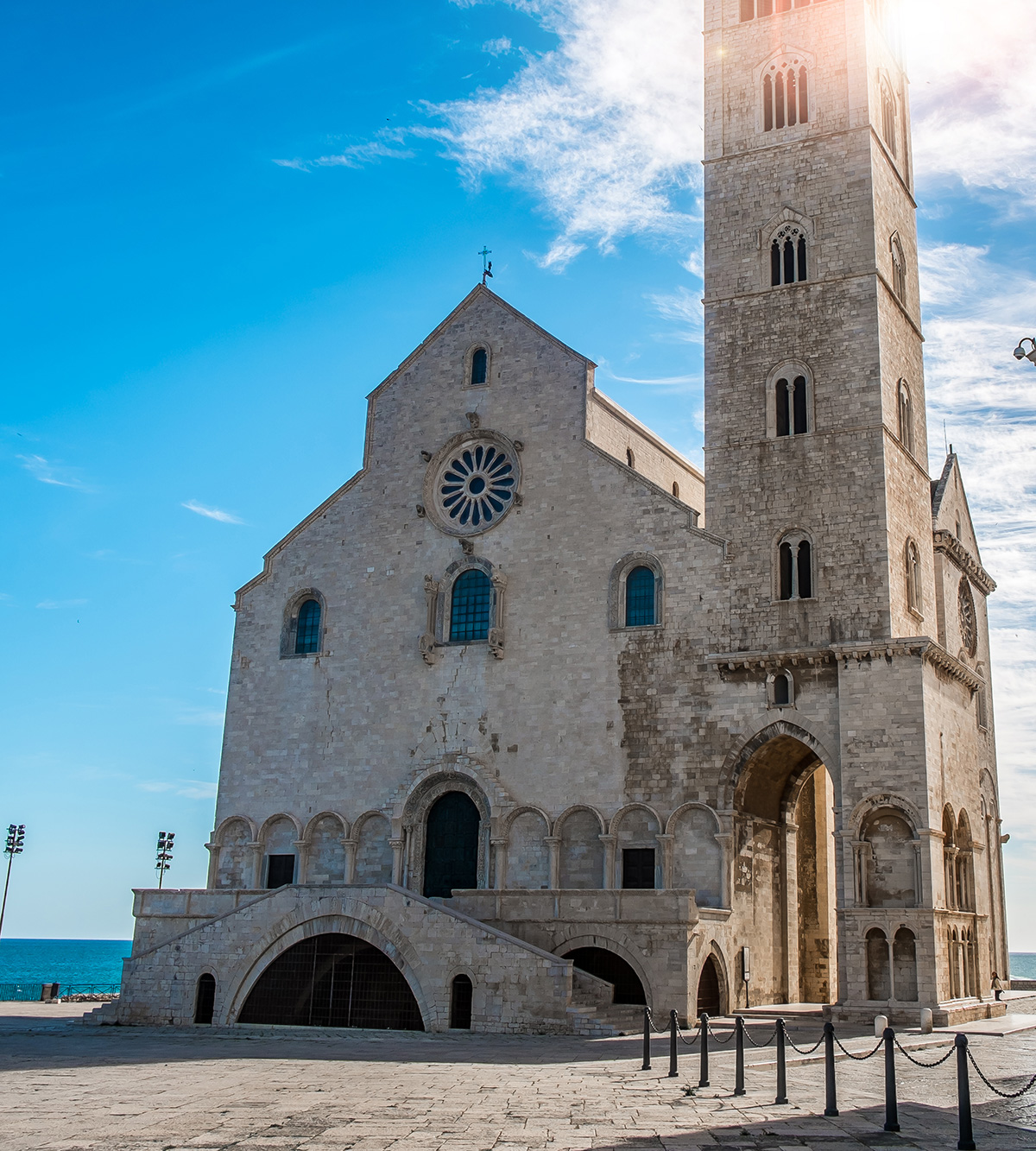
Cathedrals of the sea
In a region that has about 800 kilometers of coastline, you mustn’t miss the cathedrals of the sea, that stand overlooking the shore or perched on a cliff. Among these, the Trani cathedral is certainly one of the most famous in Puglia. UNESCO defined the church of San Nicola Pellegrino as “a monument transmitting a culture of peace”. Its construction lasted 44 years, beginning in 1099 and ending in 1043. The cathedral is defined as the queen of the cathedrals in Puglia, a majestic example of the Apulian Romanesque style. In addition to the whiteness of its facade, this church is famous for its pointed arch located under its bell tower and which gives access to the market square behind the cathedral.
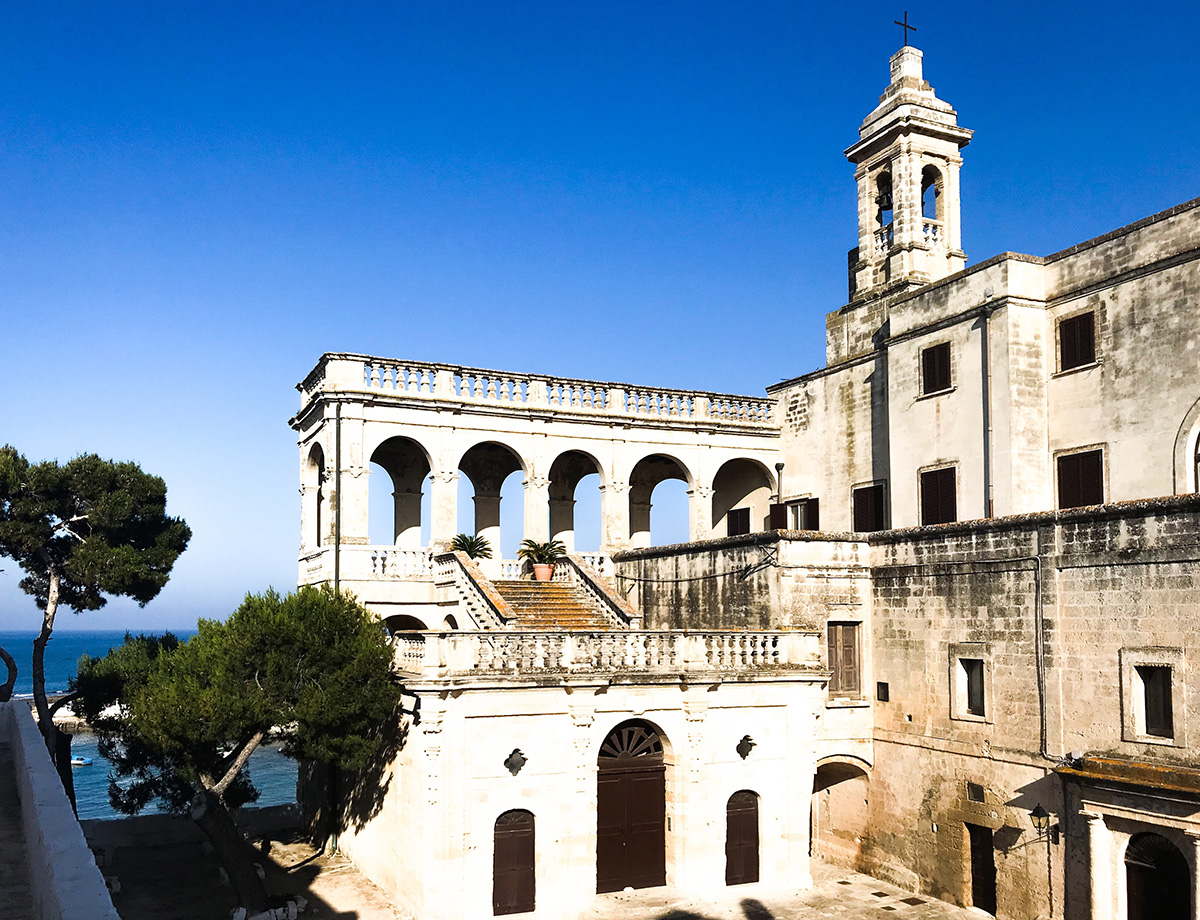
The Abbey of San Vito
Another beautiful cathedrals of the sea is the Abbey of San Vito in Polignano, one of the most famous in Puglia. Legend has it that San Vito asked a noblewoman from Salerno, who was saved from drowning in the Sele river, to move his body to Polignano, to the place where the tenth century abbey now stands. Seat of the Benedictine monks, it is a very popular place thanks to the Loggia which directly overlooks the sea and which is accessed via a majestic stairway. The abbey is surrounded by defensive walls and has two sighting towers to defend it from attacks from the sea.
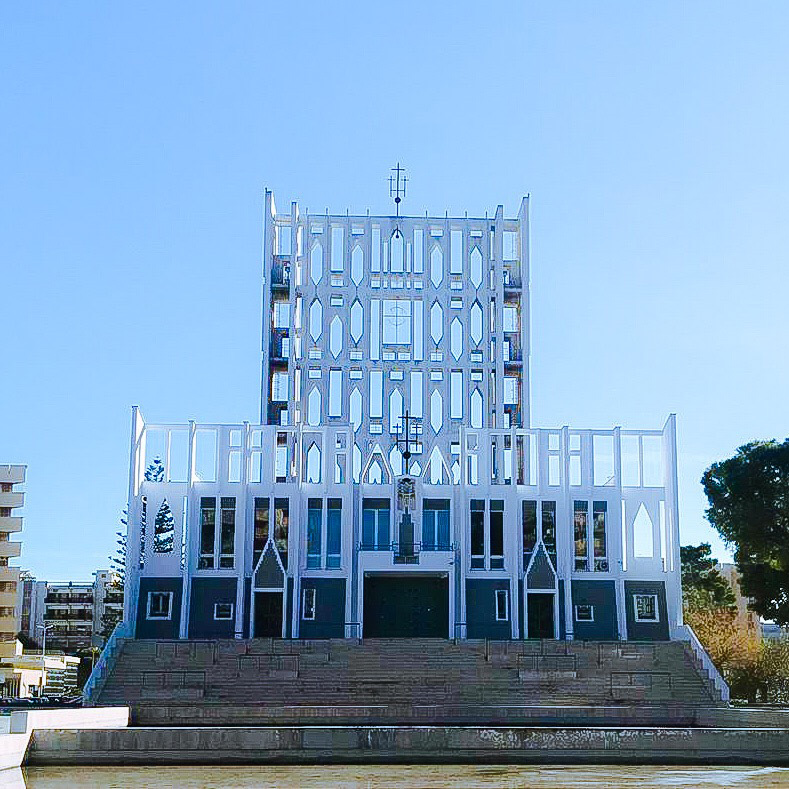
Taranto and the Giò Ponti co-cathedral
The Madre di Dio co-cathedral was built in Taranto by the famous Lombard architect Giò Ponti. The work was commissioned by the then Archbishop Guglielmo Motolese in 1970. The work represents a milestone in the life of this architect, creator of the Pirelli tower in Milan and designer of the Cassina “superlight” chair in 1957. Instead of a dome, the co-cathedral presents what the locals immediately referred to as “the sail.” The structure is reflected in pools of water designed by the architect and located in the front square. Characterized by fretworks that give it a lightness almost like that of thin paper, Ponti defined it as a “door to heaven, open to the immensity and the mystery of space and time.”
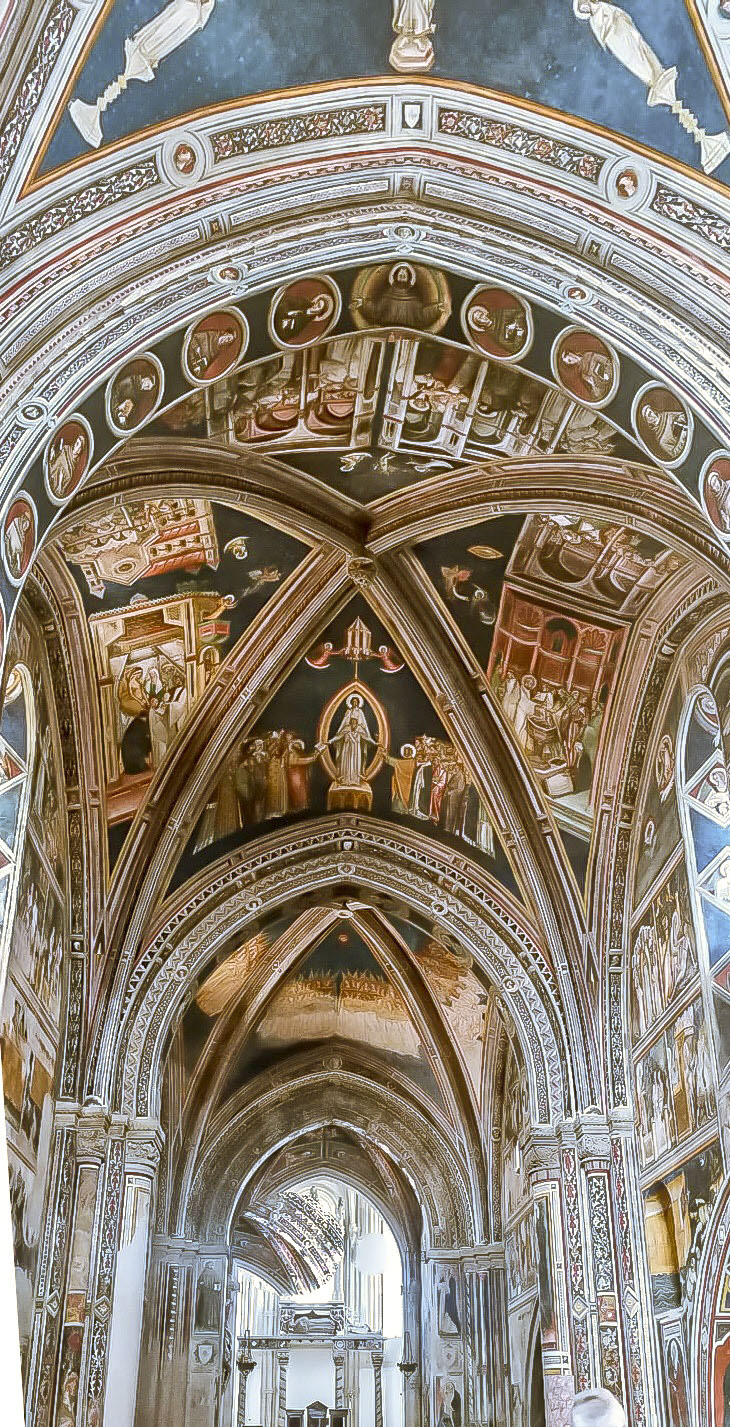
The Basilica of Santa Caterina di Alessandria in Galatina (Le)
Rightfully included among the most beautiful cathedrals in Puglia, the Basilica of Santa Caterina di Alessandria in Galatina is one of the most important examples of the Apulian Romanesque style. The external façade is made from a sort of stone embroidery. However, it is the interior of the basilica that makes the trip to Galatina worthwhile. In pure Gothic style, the aisles are entirely frescoed, the work of the Franciscans who, through their paintings, managed to teach the poor and illiterate people of the fourth century the prominent elements of the Catholic religion. In fact, the frescoes represent a sort of “Bible for the poor”. The aisles recount the different periods of the Old and New Testaments with exceptional detailed accuracy.
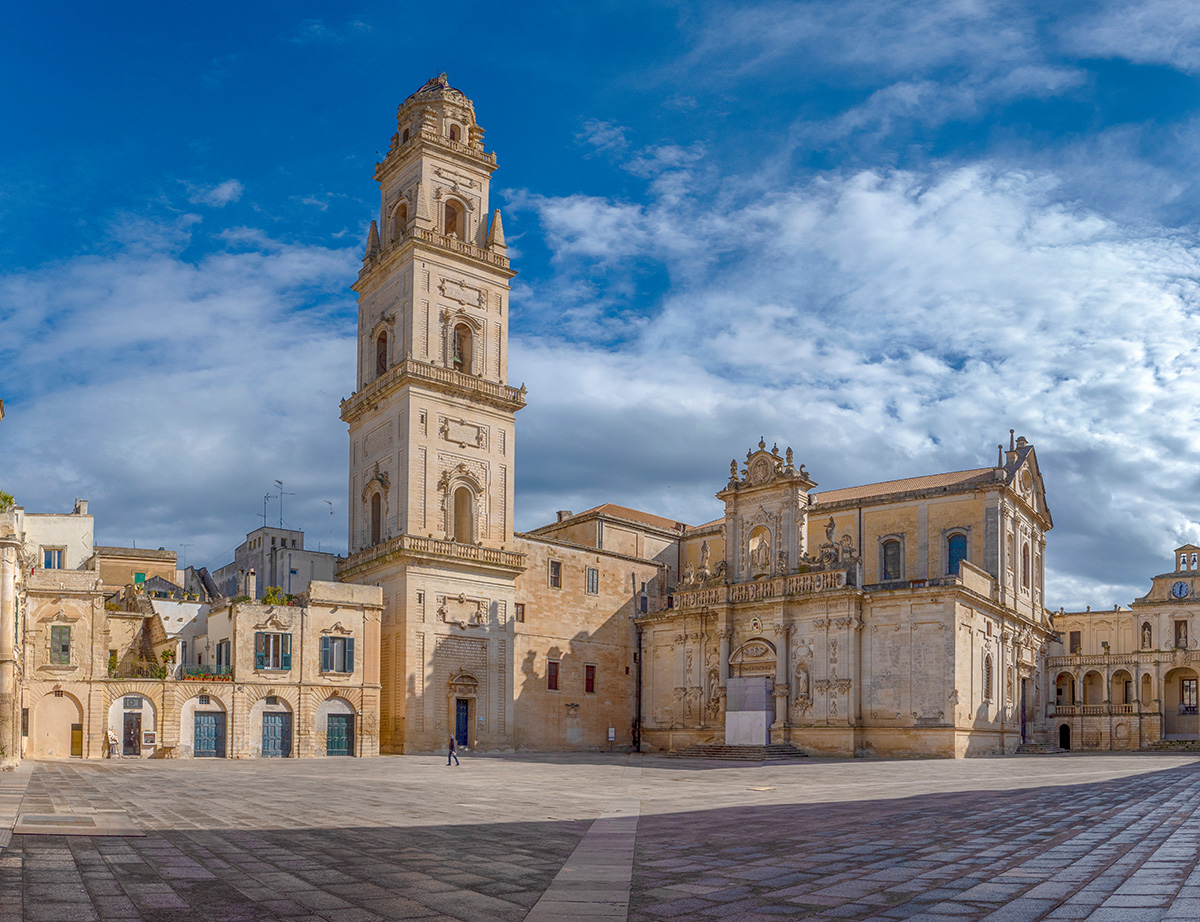
From the Apulian Romanesque to Lecce Baroque
The work on the first Cathedral of Lecce goes back to 1144. However, this cathedral in the capital of Salento was entirely rebuilt between 1659 and 1670 in the style in vogue at that time. The facade displays sumptuous seventeenth-century decoration. Inside, the baroque style dominates the twelve altars that enrich the two side aisles. The central nave has a wooden ceiling dating back to 1685 which showcases paintings by Giuseppe da Brindisi. The Cathedral also has a twelfth century crypt that was renovated in the sixteenth century with baroque additions.
